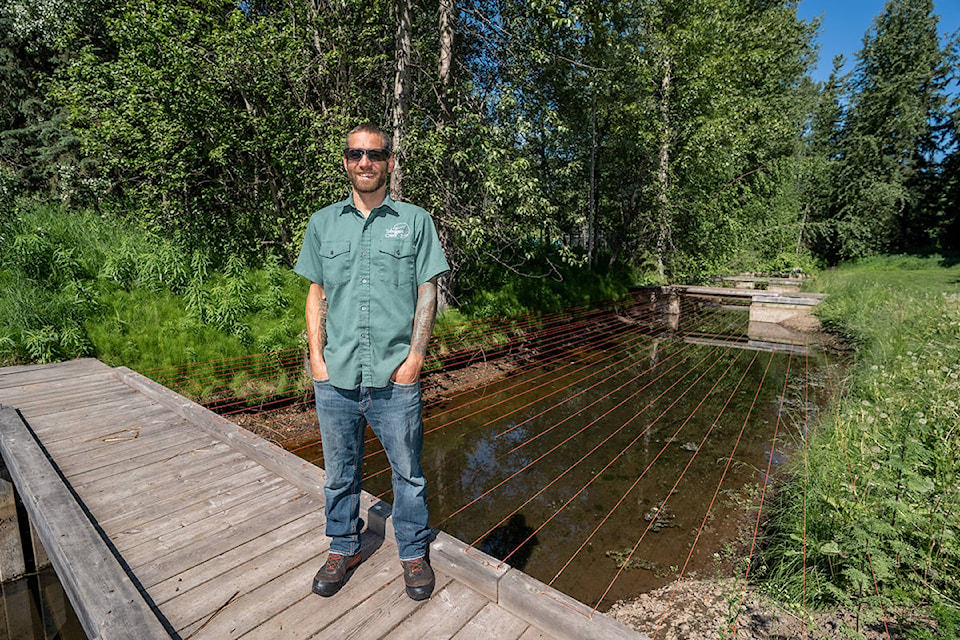In the Evelyn Valley, about 12 kilometres northwest of Smithers, work is underway to overhaul Toboggan Creek Hatchery. Initially constructed as a five-year pilot project back in 1985, the existing infrastructure has long outlived its lifespan and the aging facility is undergoing a series of upgrades to enhance biosecurity and help it continue operating safely and sustainably, well into the future.
With support and guidance from Fisheries and Oceans Canada, the Toboggan Creek Salmon & Steelhead Enhancement Society is restoring the hatchery’s outdoor earthen rearing ponds where volunteers raise yearling Coho and Chinook from salmonid fry to smolts. Now that this year’s smolt have been released, crews are removing rotten, old wooden dividers from the existing ponds and replacing them with more durable steel dividers. Next, they are reshaping the ponds and lining them with aggregate to ensure they can last longer and provide a cleaner environment for the salmon fry to thrive.
“Our fish need a safe and productive place to rear, and we also need to ensure we can keep our stocks separated,” said Toboggan Hatchery Manager Kris Bulloch. “Wood is porous and can be a breeding ground for bacteria, viruses and parasites that can impact our fry, as well as other aquatic life downstream. Our long-term goal is to remove and replace all the wooden structures submerged or partially submerged in flowing water at our hatchery.”
Value to Pacific Northwest Coho fishery
The different activities conducted at Toboggan Creek have a significant impact on how scientists analyze Pacific salmon stocks. From wild smolt trapping in spring, to mid-summer coded wire tagging and marking, followed by the fall adult counting fence operations, the field data and samples gathered are used by Fisheries and Oceans Canada to manage the entire Pacific Northwest Coho fishery. The information is a determining factor in the annual allowable commercial retention of ocean-going Coho.
“Toboggan Creek Hatchery is the only Coho indicator stock in the Skeena watershed. Through our ongoing assessment activities, we have been providing uninterrupted Coho salmon exploitation, ocean distribution and survival data for more than 35 years,” said Bulloch.
Community and volunteer support boosted by funding from Port
Efforts to modernize the Toboggan Creek Hatchery have required collaboration and support from Fisheries and Oceans Canada experts, local First Nations fisheries, staff from other B.C. hatcheries, and dedicated volunteers from the surrounding community. To help cover the cost of the extensive upgrades, the Prince Rupert Port Authority’s Skeena River Salmon Enhancement Program is contributing $60,000 to the project.
“The Skeena River Salmon Enhancement Program supports partnership initiatives that directly contribute to the productivity of wild salmon stocks in the Skeena watershed,” said Ken Veldman, Vice President of Public Affairs and Sustainability at the Prince Rupert Port Authority. “The Toboggan Creek Hatchery’s upgrade project completely aligns with our goals, not only to support and enhance salmon stocks, but to build stronger, more sustainable communities. This volunteer organization has been serving recreational anglers, commercial fishers and scientists from across our region for more than three and half decades, and we’re proud to help it continue that legacy.”
Find out more about salmon enhancement projects at www.rupertport.com/sustainability.
